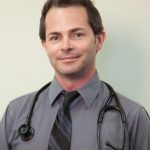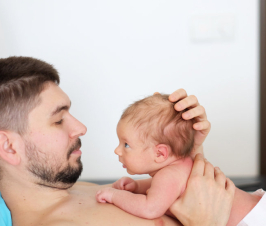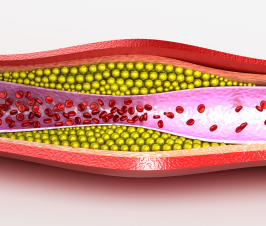Treating Andropause and Low Testosterone in Aging Men
Recently, discussions have emerged on television, in magazines, on the radio, or by word of mouth highlighting the phrases “Low T” or “Andropause;” But what do these phrases mean? As men age, they begin to experience symptoms that fall in line with hormonal imbalance, particularly low testosterone1 Many men never seek treatment and go about their daily lives experiencing significant decline in testosterone production, resulting in symptoms like fatigue, low libido, decreased strength, decreased mental capacity, anxiety, depression, decreased lean body mass, fatigue, and decrease in bone mineral density, among others.2 As awareness of this diagnosis grows, more men are seeking treatment and finding ways to travel through the years without feeling the emotional and physical changes that tend to come with age. One of the main offerings to help solve this is the obvious – using agents to replace testosterone.
What Does Testosterone Replacement Treatment Look Like?
When practitioners discuss the topic of testosterone treatment with their patients, they talk about replacing it with agents such as gels, creams, and injections orthey attempt to encourage a more natural boost to a man’s testosterone by using herbs and nutraceuticals. While these methods are undoubtedly an approach towards addressing the symptoms, these methods do not address the underlying cause of the testosterone deficiency. To really get to the root of the issue, we need to also look at the individual’s diet, lifestyle, stress level, and their overall health. In this article, we will discuss the basics: key areas that influence testosterone production and the interrelated players in the male sex hormone system. Treatment for each of these areas may include a natural, bioidentical, or pharmaceutical method resulting in alteration of the entire system.
The Male Sex Hormone Cycle
The male sex hormone cycle is incredibly complex and is involved in many processes in the body. If we start in the brain, the simplified sex hormone cycle may look something like this:
- The brain releases a cascade of signals that sends luteinizing hormone (LH) into the blood and down to the testicles.
- LH, in turn, stimulates the testicles to make more testosterone.
- Testosterone is released into the system for the body to meet what the brain (and LH) is telling it to do, giving us measurements for total testosterone (T). As an aside, some testosterone is converted into dihydrotestosterone by an enzyme called 5-alpha-reductase.
- To help carry non-water soluble testosterone, much of it is bound to the carrier protein, Sex Hormone Binding Globulin (SHBG), setting up the ability to calculate free It is the lower level of free testosterone that has the greatest impact with regards to “Low-T” symptoms.
- Testosterone is then converted into its sister hormone, estrogen, by an enzyme called aromatase.
- The cycle continues again from step 1.
As noted, the main tool discussed in testosterone replacement treatments includes adding external testosterone to the system during step 3 of this cycle, with subsequent compensation at all of the other steps. The system may also be manipulated at other steps in the cycle and treatment may be altered depending on what the patient’s lab results reveal. Each method of treatment, whether gels, creams, injections, supplements, or others, have pros and cons and no one particular method is right for everyone.3 This is where having an open conversation with your doctor is helpful, especially if you are focused solely on testosterone boosting or whether you are looking for the full-body approach.
Additional Options for Testosterone Treatment
It’s apparent that hormones are comprised of a series of complex systems. Thus, they can be adjusted at many different steps in the hormone cycle. Let’s look at a few alternatives:
- Selective Estrogen Receptor Modulators (SERMs) are a class of pharmaceuticals that prevent the brain from seeing how much estrogen is present in the sex hormone cycle. When utilized in testosterone treatment, they assist in encouraging the brain to release more LH and send signals to the testes to produce more testosterone.4
- LH activity can be stimulated by the addition of Human Chorionic Growth Hormone (HCG). The biochemical structure of HCG looks very similar to LH and can ‘unlock’ the cells in the testicle to produce more testosterone, much like LH does naturally. Clinically, it’s noted that younger men tend to respond better to this type of treatment than older men, for unknown reasons.
- Testicular function and production of testosterone can be impacted directly by a number of natural agents including nutrition and herbal compounds. Nutrients are often used for increasing testosterone production while herbs are used to stimulate testosterone-making cells. Both agents assist in removing hormone-disrupting chemicals from a person’s system either in addition to or in replacement of other testosterone-boosting treatments.
- Herbal remedies have shown to reduce SHBG levels, thus increasing the level of ‘active’ testosterone in a man’s system.
While there are many outlets for testosterone treatment, the literature highlights testosterone replacement therapy as the most consistent in leading to positive male symptom improvement.5 However, as each body is unique, doctors in clinical practice find that men have varying levels of response to each treatment and thus more than one treatment option may need to be implemented. As always, the key to a longer term solution is to not only treat the symptoms of low testosterone, but also to understand and treat the physical, emotional, and mental factors that lie at the root of the issue, encompassing a full-body approach.
Image Copyright: <a href=’https://www.123rf.com/profile_dolgachov’>dolgachov / 123RF Stock Photo</a>
 Dr. Adam Sandford is a Naturopathic Medical Doctor in El Segundo, California. As a primary care doctor he provides wellness, acute and chronic care for patients of all ages. His practice also has a special emphasis on adrenal fatigue, men’s health, sexual and reproductive support, bioidentical and thyroid hormone replacement, as well as advanced treatments for gastrointestinal disorders (including SIBO), Hepatitis C, Parkinson’s Disease, fibromyalgia, chronic fatigue and chronic pain. His approach towards medicine is that all medical tools are valid and have their place, whether diet or drugs, exercise or surgery – the art of medicine for the Naturopathic Medical Doctor is working with each patient to help select the approach that is most right for them, for who they are today and who they want to be tomorrow.
Dr. Adam Sandford is a Naturopathic Medical Doctor in El Segundo, California. As a primary care doctor he provides wellness, acute and chronic care for patients of all ages. His practice also has a special emphasis on adrenal fatigue, men’s health, sexual and reproductive support, bioidentical and thyroid hormone replacement, as well as advanced treatments for gastrointestinal disorders (including SIBO), Hepatitis C, Parkinson’s Disease, fibromyalgia, chronic fatigue and chronic pain. His approach towards medicine is that all medical tools are valid and have their place, whether diet or drugs, exercise or surgery – the art of medicine for the Naturopathic Medical Doctor is working with each patient to help select the approach that is most right for them, for who they are today and who they want to be tomorrow.
References:
- Matsumoto, AM. Clinical implications of the decline in serum testosterone levels with aging in men. Journals of Gerontology. 2001. Available at: http%3a%2f%2fbiomedgerontology.oxfordjournals.org%2fcontent%2f57%2f2%2fm76.short. Accessed May 9, 2015.
- Wespes, E, Schulman, CC. Male andropause: myth, reality, and treatment. International Journal of Impotence Research. 2002. doi:10.1038= sj=ijir=3900798.
- Heaton, JPW. Hormone treatments and preventive strategies in the aging male: whom and when to treat? Reviews in Urology. 2003. Available at: http://www.ncbi.nlm.nih.gov/pmc/articles/pmc1502318/. Accessed May 9, 2015.
- Osborne, KC. Journal of Clinical Oncology. Selective Estrogen Receptor Modulators: Structure, Function, and Clinical Use. 2000. Available at: http://jco.ascopubs.org/content/18/17/3172.short. Accessed May 9, 2015.
- Brodsky, IG, Nair, KS. Effects of testosterone replacement on muscle mass and muscle protein synthesis in hypogonadal men–a clinical research center study. : The Journal of Clinical Endocrinology & Metabolism: Vol 81, No 10. 2013. Available at: http://press.endocrine.org/doi/abs/10.1210/jcem.81.10.8855787. Accessed May 9, 2015.

















